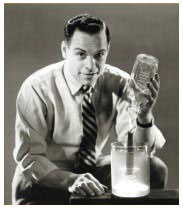"We're returning to the moon. America doesn't quite know that that's happening, and we need to make sure the story gets out," he said. "That's my job -- to get the story out of NASA and to make sure that the members of Congress are informed and interested in what it can do for our country to continue a viable space program."
Space activists need to get the message out to the public. We are going to the moon and beyond. We need to tell them why we need a space program and its benefits. I don't see many congressman or senators supporting the space program right now. With Tom Delay gone from Congress and the democrats in power it seems dim. But with the 'Blogosphere' and new media I think we can make a difference.


 Photo Credit: William Gray's presentation 6/6/07
Photo Credit: William Gray's presentation 6/6/07 Sunni on Spacewalk
Sunni on Spacewalk Atlantis Docked to ISS
Atlantis Docked to ISS Both crews together
Both crews together






 Atlantis on pad
Atlantis on pad